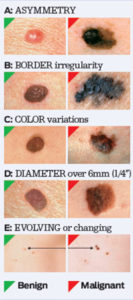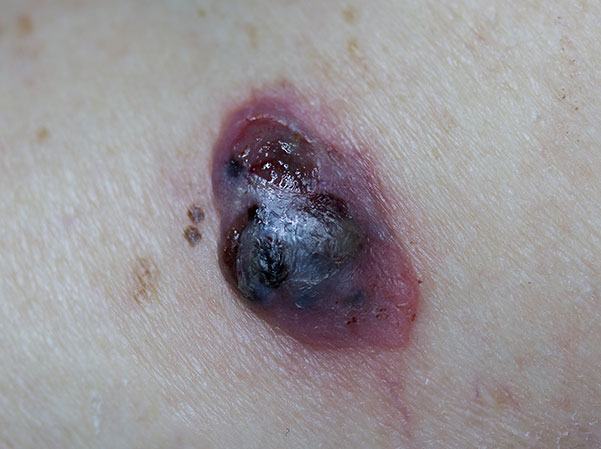

Sometimes, a biopsy is needed to rule out cancer. Some pyogenic granulomas disappear without treatment. Pyogenic granulomas usually form after an injury to the skin and bleed easily. Red oozing and bleeding bump caused by excessive growth of capillaries (small blood vessels) and swelling. People with atypical moles should see a doctor for any changes that may indicate skin cancer. In addition, people with atypical moles should avoid sun exposure, since sunlight may accelerate changes in atypical moles. Treatment may include removal of any atypical mole that changes in color, shape or diameter. These types of moles may occur anywhere on the body. Atypical moles can be tan to dark brown, on a pink background.

Larger than normal moles (more than a half inch across), atypical moles are not always round. Some benign moles may develop into skin cancer (melanoma). Most moles are benign and no treatment is needed. Moles can change over time and often respond to hormonal changes. Most moles are dark brown or black, but some are skin-colored or yellowish. Moles can be flat or raised, smooth or rough, and some contain hair. Small skin marks caused by pigment-producing cells in the skin. But if the lipoma changes shape or you have symptoms, your healthcare provider may do a biopsy. Lipomas tend to appear on the forearms, torso, and back of the neck. Round or oval, easily movable lumps under the skin caused by fatty deposits. Other treatment approaches may include surgery, radiation, laser, or silicone patches to further flatten the keloids. Injections of corticosteroid drugs may help to flatten the keloids. Keloids respond poorly to most treatment approaches. Keloids are more common in people with dark skin. Smooth, firm, raised, fibrous scars on the skin that form in wound sites. Freckles are common in people with blond or red hair. Some internal dermoid tumors may even contain cartilage, bone fragments, and teeth.ĭermoid cysts may be removed surgically for cosmetic reasons.ĭarkened, flat spots that typically appear only on sun-exposed areas of the skin. They are more common in women.ĭermatofibromas can be surgically removed if they become painful or itchy.Ī benign tumor which is made up of hairs, sweat glands, and sebaceous (oil) glands. They often occur on the legs and may itch.

Small round brownish to red-purple bumps caused by an buildup of fibroblasts (soft tissue cells under the skin). What are the different types of skin growths? Most people have some skin marks, such as freckles and moles. Skin changes as you grow older and are exposed to sunlight, health conditions, trauma, and other environmental changes. Other Benign Skin Growths What are other benign skin growths?


 0 kommentar(er)
0 kommentar(er)
